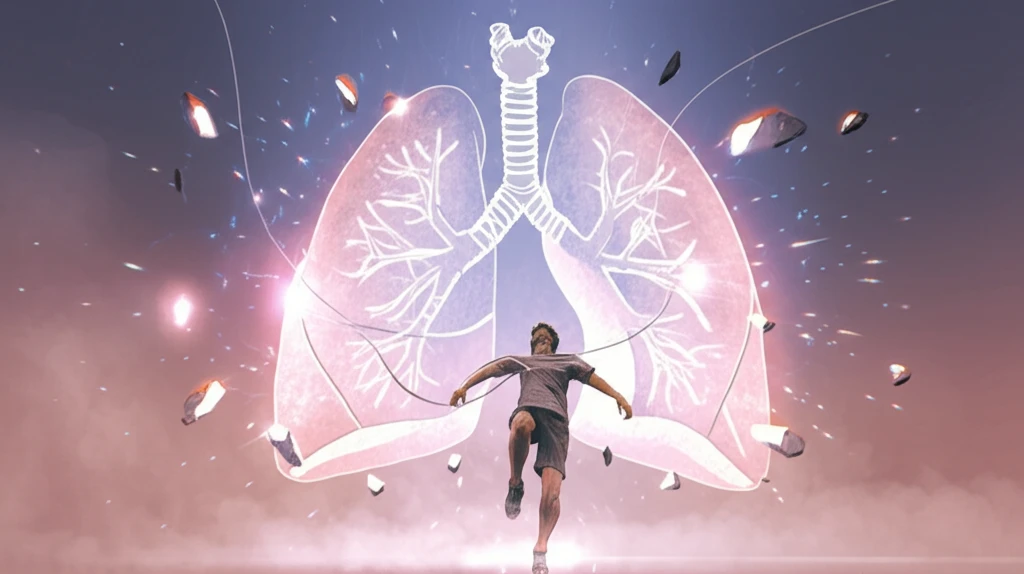
Breathe Easier, Perform Better: How Inspiratory Muscle Training Can Supercharge Your Workouts
"Unlock your athletic potential with inspiratory muscle training (IMT). Learn how this simple technique enhances respiratory strength, boosts endurance, and transforms your fitness regime."
In the quest for peak physical performance, athletes and fitness enthusiasts are constantly seeking innovative methods to enhance their capabilities. While traditional training regimens focus on building strength and endurance in skeletal muscles, the often-overlooked respiratory muscles play a crucial role in overall performance. Inspiratory Muscle Training (IMT) has emerged as a promising strategy to improve respiratory strength and endurance, leading to enhanced athletic performance across various sports and activities.
The respiratory system's primary function is to maintain alveolar ventilation, which is essential for meeting the body's metabolic demands. During high-intensity exercises, the respiratory muscles can experience fatigue due to increased workload and dyspnea, which can compromise overall performance. This fatigue can trigger a metaboreflex mechanism, redirecting blood flow to the respiratory muscles at the expense of peripheral musculature, ultimately limiting physical capacity.
Inspiratory muscle training (IMT) offers a targeted approach to combat respiratory muscle fatigue and improve athletic performance. By strengthening the inspiratory muscles, IMT aims to minimize respiratory fatigue, enhance ventilatory efficiency, and optimize oxygen uptake, leading to improved endurance and overall athletic performance. This article explores the benefits of IMT, its application in sports, and how it can be integrated into training programs to maximize athletic potential.
The Science Behind Inspiratory Muscle Training

Inspiratory muscle training (IMT) involves specific exercises designed to strengthen the muscles responsible for inhalation, primarily the diaphragm and intercostal muscles. This training typically involves using a handheld device that provides resistance during inhalation, challenging the muscles to work harder and improve their strength and endurance. By increasing the strength and efficiency of these muscles, IMT can enhance the overall function of the respiratory system.
- Increased Respiratory Muscle Strength: IMT strengthens the diaphragm and intercostal muscles, making breathing easier and more efficient.
- Improved Endurance: Stronger respiratory muscles delay fatigue, allowing for sustained high-intensity activity.
- Enhanced Oxygen Uptake: IMT optimizes oxygen uptake, providing more energy to working muscles.
- Reduced Dyspnea: Improved respiratory function minimizes shortness of breath during strenuous exercise.
Incorporate IMT into Your Training Routine
In conclusion, inspiratory muscle training offers a promising strategy to enhance respiratory muscle strength, improve endurance, and boost athletic performance across various sports and activities. By incorporating IMT into your training routine, you can unlock your full athletic potential and achieve new levels of fitness. Whether you're an elite athlete or a fitness enthusiast, IMT can provide a competitive edge by optimizing your respiratory function and maximizing your overall physical capacity. Consider consulting with a fitness professional or respiratory therapist to determine the most appropriate IMT protocol for your individual needs and goals.
